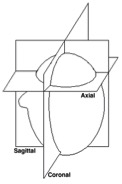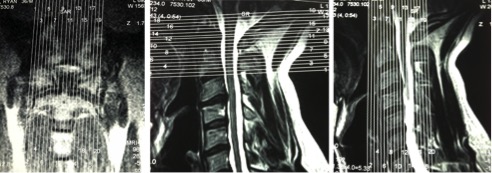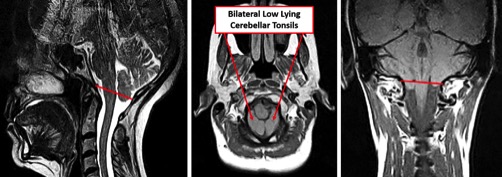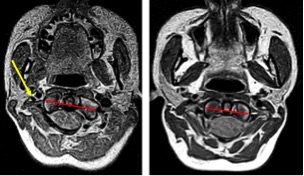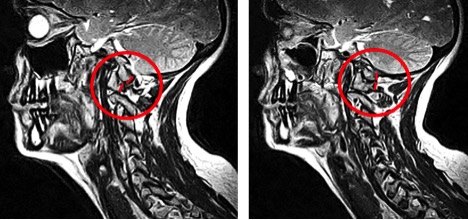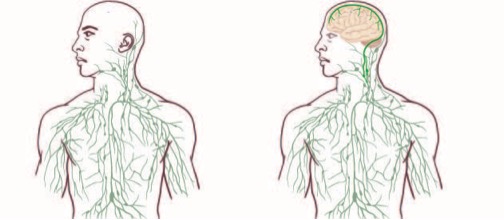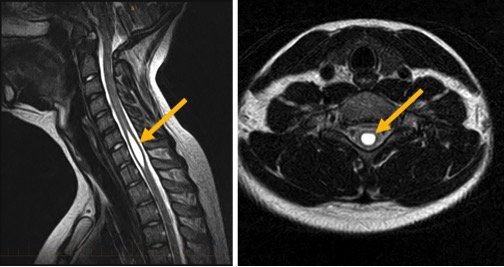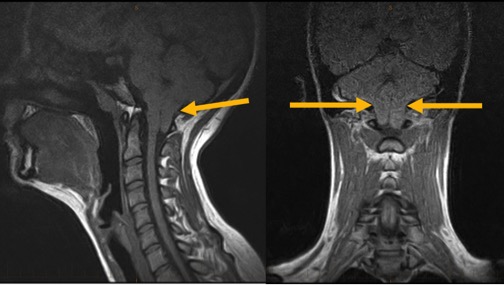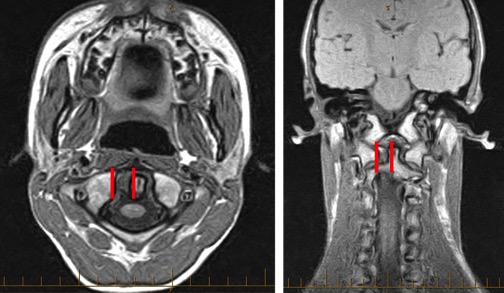|
![]()
From the Townsend Letter |
|||
A Mystery Answer to Restoring Brain Health by David I. Minkoff, MD, Julie Mayer Hunt, DC, DICCP, FCCJP, and Ron Tindell |
|||
|
CCJ Imaging Methods
Figure 10 Figure 11 Atlas Rotation Observations: When the atlas rotates, it is plausible anatomically that the transverse process can abut the internal jugular vein. Figure 12 depicts two examples of atlas rotation misalignment. The red line highlights the rotation. The yellow arrow points to an internal jugular, which appears to have been compressed by the misaligned atlas. This compression can potentially affect venous outflow from the brain, causing backup of venous metabolic waste blood in the brain which is suggested in neurodegenerative brain diseases.10 Also note the football shape versus a normal, round shape of the spinal cord which plausibly can suggest dentate ligament attachment tension at the brainstem.5,11 Figure 12 C2 (Axis) rotation can be observed on CCJ oriented MRIs. Figure 13 provides several examples of axial rotational misalignment. The standard medical community cervical spine MRI misses this segment because the slices start at the C2/C3 disc. When one considers the vertebral artery pathway, illustrated in Figure 2, the axial misalignment can plausibly correlate with vertebral artery insufficiency and also the misalignments can affect dentate ligament tension of the spinal cord.5,11 Figure 13 C1 misalignment can be observed in the sagittal view with respect to the occipital condyles and the atlas lateral mass position. Figure 14a suggests anterior misalignment of the atlas lateral mass with respect to the occipital condyle. Figure 14b depicts a normal positioning of the C0/C1 articulation.13 Figure 14a and 14b Figure 15 Craniocervical Syndrome Case Studies Figure 16a and 16b Figure 17 Figure 18
|
|||
![]()
Consult your doctor before using any of the treatments found within this site.
![]()
Subscriptions
are available for
Townsend Letter, the Examiner of Alternative Medicine
magazine, which is
published 10 times each year. Search our pre-2001
archives for further information. Older issues of the printed magazine
are also indexed for your convenience.
1983-2001
indices ; recent indices. Once you find the magazines you'd like to order, please
use our
convenient form, e-mail subscriptions@townsendletter.com,
or call 360.385.6021.
360.385.6021
Fax: 360.385.0699
info@townsendletter.com
Who are
we? | New articles | Featured
topics | e-Edition |
Tables of contents | Subscriptions | Contact
us | Links | Classifieds | Advertise |
Alternative
Medicine Conference Calendar | Search site | Archives |
EDTA Chelation Therapy | Home
© 1983-2018 Townsend Letter
All rights reserved.
Website by Sandy
Hershelman Designs
![]()






